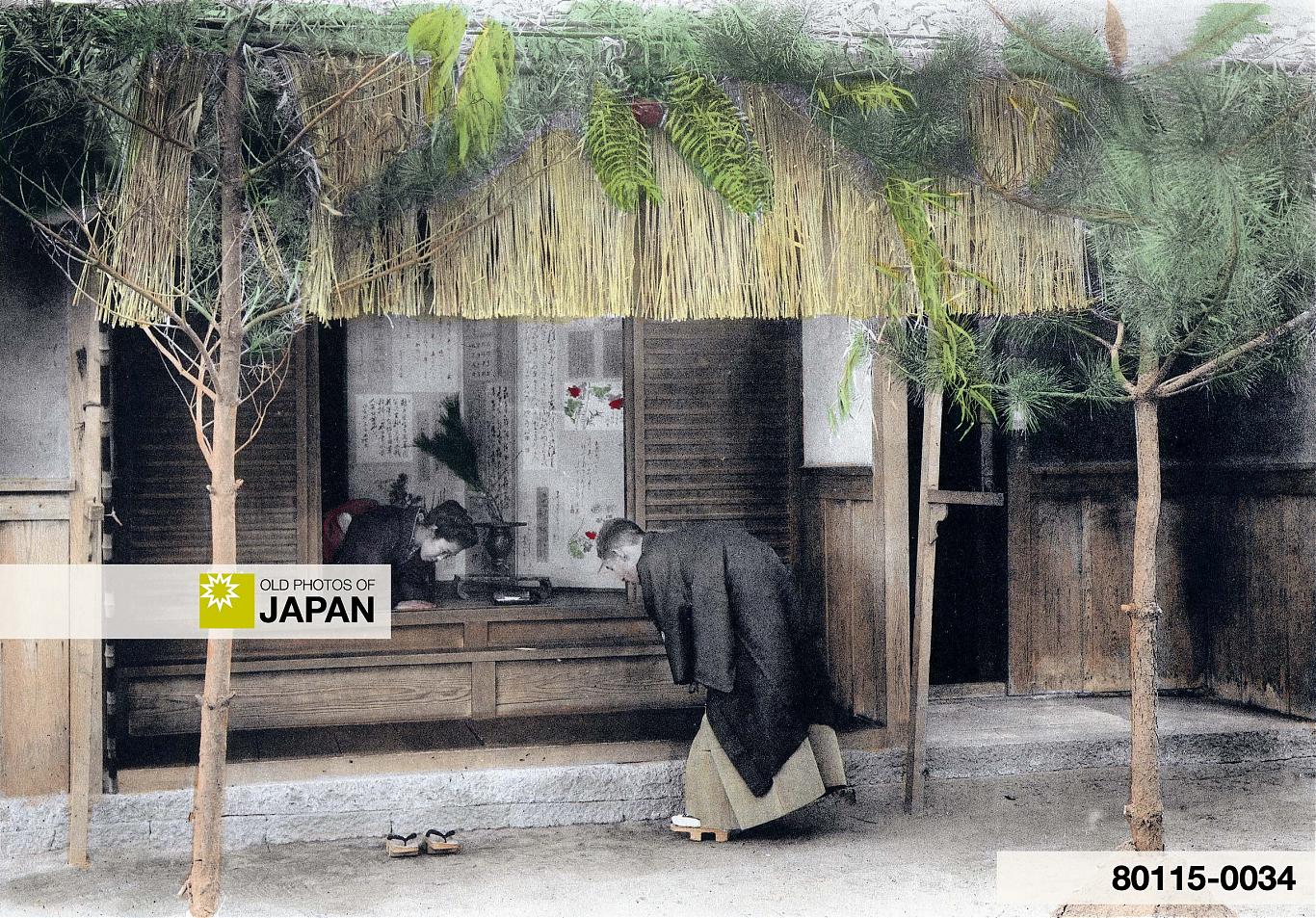The first aisatsu (greetings) of the year. Out of this custom, the more convenient modern custom of sending New Year cards (nengajo) was born.
The New Year cards, or nengajo, that are delivered during the first three days of January became popular after the Japanese post office began issuing postcards in the Meiji Period (1868-1912).
This image is part of The New Year in Japan, a book published by Kobe-based photographer Kozaburo Tamamura in 1906. Original text1:
The ceremonial breakfast having been disposed of, the members of the family sally-fort to pay their respects to their friends. Merchants (or their representatives), dressed in faultless attire, call upon their friends and customers, and leave cards, or give a personal greeting. Friends and enemies (for the moment) are reconciled, and people who were wrangling with each other on the last day of the old year, are now indulging in hypocritical smiles, and an old Japanese maxim hath it: ‘Ye, the devil of the eve, comes for homage in the morn!
See all New Year images on Old Photos of Japan.
Notes
1 Tamamura, Kozaburo (1906). The New Year in Japan. Tamamura Shashinkan.
Published
Updated
Reader Supported
Old Photos of Japan aims to be your personal museum for Japan's visual heritage and to bring the experiences of everyday life in old Japan to you.
To enhance our understanding of Japanese culture and society I track down, acquire, archive, and research images of everyday life, and give them context.
I share what I have found for free on this site, without ads or selling your data.
Your support helps me to continue doing so, and ensures that this exceptional visual heritage will not be lost and forgotten.
Thank you,
Kjeld Duits
Reference for Citations
Duits, Kjeld (). Kobe, 1906: New Year Celebrations 10, OLD PHOTOS of JAPAN. Retrieved on December 14, 2025 (GMT) from https://www.oldphotosjapan.com/photos/673/new-year-celebrations-10




There are currently no comments on this article.